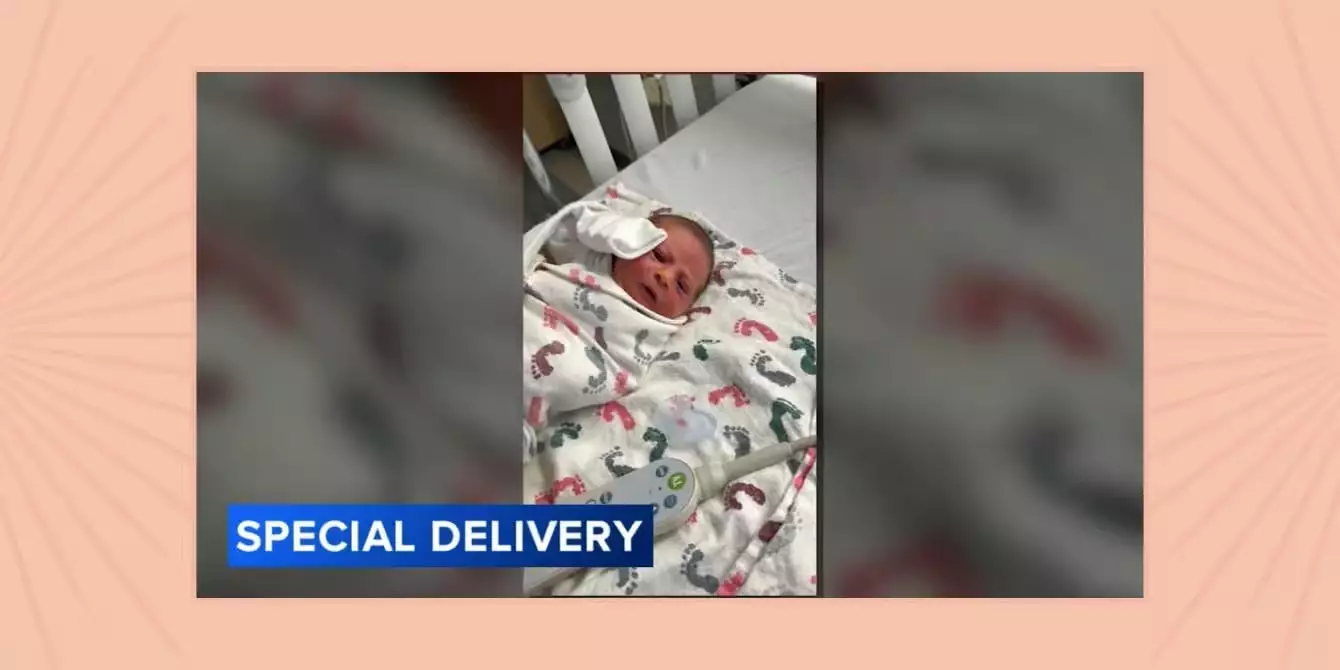Life often presents us with the most profound moments when we least expect them. Few experiences embody this paradox better than the sudden collision of happiness and heartbreak that consumes a family in a single day. The story of Elissa Danielle West is a poignant testament to the unpredictable nature of life’s emotional landscape. On a seemingly routine day, Elissa found herself facing extraordinary circumstances: amidst the loss of her beloved mother, she became the hero who delivered her own grandson in a car on a quiet New Jersey street. This narrative challenges our understanding of resilience, revealing how love’s enduring power can transform grief into new beginnings.
What is particularly striking is the way such moments are not isolated incidents but deeply rooted in the human capacity to hold conflicting emotions simultaneously. The strength required to mourn a loved one while simultaneously celebrating the birth of a new life is immense. Our society often leans toward compartmentalizing feelings—discouraging us from feeling happiness and sadness at once. Yet, truth reveals that these emotions are intimately connected, often walking hand in hand. In Elissa’s experience, the birth of Noah became a living symbol of hope—a reminder that life’s miracles can emerge precisely where pain resides.
The Significance of Life’s Sacred Paradox
The arrival of Noah, born just hours after the death of his great-grandmother, carries an almost cosmic significance. Many interpret such coincidences—or what science calls “meaningful patterns”—as evidence that human existence is threaded with a deeper purpose. The timing of Noah’s birth, originally scheduled for March 8, aligning with his great-grandmother’s funeral, invites us to see beyond mere chance. Some see this as a spiritual message: love persists beyond physical absence, and life finds a way to restore balance, even in moments of profound loss.
Psychologists have long studied how humans handle grief intertwined with joy. Research indicates that experiencing mixed emotions can be a healthy, adaptive response—one that preserves our mental well-being. These studies show that encountering such emotional complexity is not a sign of weakness but a testament to our resilience. The capacity to recognize the significance of new life in moments of mourning redefines our understanding of hope and healing. Noah’s birth became a balm amid heartbreak, an organic reminder that life continues to evolve, often in the most unexpected ways.
The Transformative Power of Love and Memory
Love, in its many forms, remains resilient, capable of transcending physical absence and even death. For Elissa and her family, Noah’s arrival was more than just a new addition; it became a vessel for collective healing. Her mother, who loved holding babies, may not have met Noah in life, but her influence is etched into every fiber of his existence. Through silent memories and enduring bonds, love persists, reshaped and renewed by the new life that grew from the depths of grief.
This phenomenon resonates with broader societal insights. Families that experience loss often find innovative ways to keep the memory of their loved ones alive. Births that follow a tragedy can serve as powerful symbols of continuity, as if nature itself is reaffirming that love never truly dies. Such moments challenge the conventional narrative that grief diminishes love; instead, they highlight its capacity to evolve, cementing bonds that defy mortal limits.
Societal and Scientific Perspectives on Birth and Loss
The interconnectedness of grief and new life has been examined in numerous studies, lending empirical weight to what families like the Wests intuitively experience. Scientific research underscores that children born after a loss are often perceived as cherished symbols of hope—testaments to resilience. These babies tend to hold a special place within familial stories, embodying both the pain and promise of life.
Moreover, psychological studies reveal that experiencing the death of a parent during reproductive years often influences family planning decisions. Many individuals feel an instinctive pull toward new parenthood following loss, seeking to forge a legacy of life that honorously persists beyond death. This beckons us to rethink our understanding of suffering and renewal: perhaps adversity is the fertile ground from which new hope grows.
The story of Noah’s birth exemplifies this synthesis of scientific insight and emotional truth. It reminds us that no tragedy is solely destructive; it can also be a catalyst, inspiring us to embrace life more fully. Resilience becomes not just the ability to survive, but to find meaning and beauty in the aftermath of heartbreak.
Embracing Love’s Infinite Forms
Ultimately, what the story of Elissa and Noah teaches us is that love’s reach extends beyond conventional boundaries. It morphs, persists, and adapts—dwelling not just in physical presence but also in memory, tradition, and the ongoing cycle of life itself. Parenthood, loss, grief, and hope are threads woven into the fabric of our existence, each influencing the other in complex, beautiful ways.
For families navigating grief, Noah’s story offers a powerful message: that even in moments of sorrow, life’s inherent capacity for renewal is undeniable. Love and memory remain potent forces, shaping our journeys and anchoring us through life’s most turbulent currents. In embracing these truths, we discover that resilience is not simply about enduring hardship but transforming it into a new chapter—one that honors both the loss and the love that continues to sustain us.

